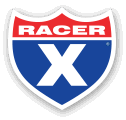TJ Albright Joins Phoenix Racing Honda as Fill-In Rider for Pro Motocross

Racer X – Motocross & Supercross News

Southwick, MA SouthwickAMA Pro Motocross Championship
Earlier this week, Gavin Towers announced he had suffered a knee injury that will sideline him for the remainder of the AMA Pro Motocross Championship this summer. Now, TJ Albright has joined the Phoenix Racing Honda as a fill-in rider for Pro Motocross. Albright was racing with the Gizmo Mods Rock River Yamaha Racing in Monster Energy AMA Supercross, and he made six main events in the 250SX West Division with a season-best 12th at the Glendale SX Triple Crown. Albright will make his Pro Motocross season debut at tomorrow’s Southwick National.
“Life is wild an your never sure what is next but I’m beyond grateful to the @phxracinghonda team for giving me an opportunity to race outdoors!
Thank you to everyone on the team an sponsors for rushing parts/gear/graphics to make this happen!
Let’s go racing
📸 @always.moto”
Check out some highlights from Friday’s press day ahead of the Southwick National, via Tom Journet.



